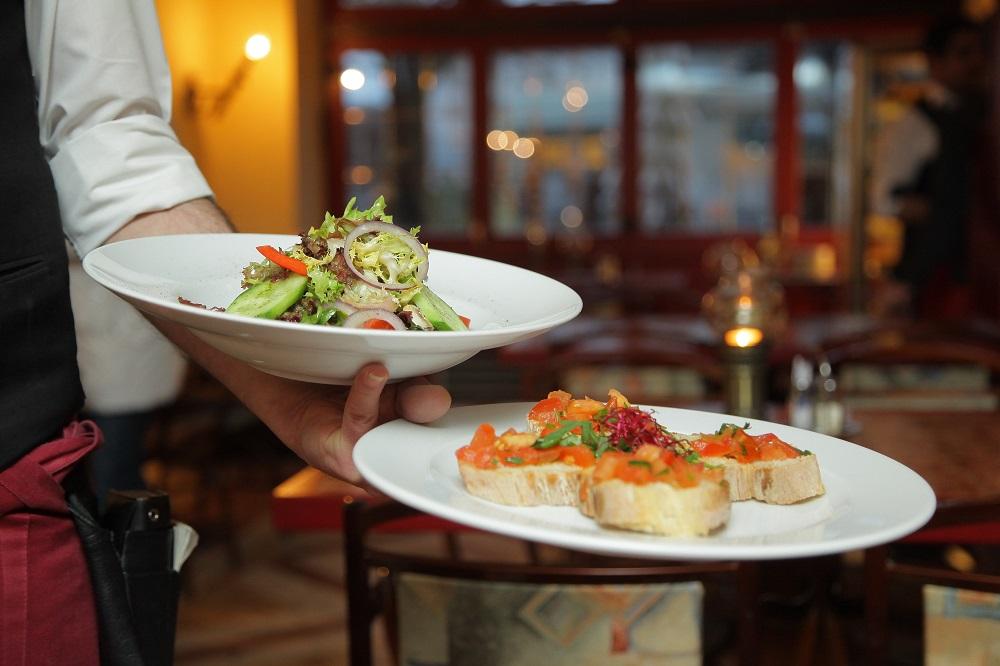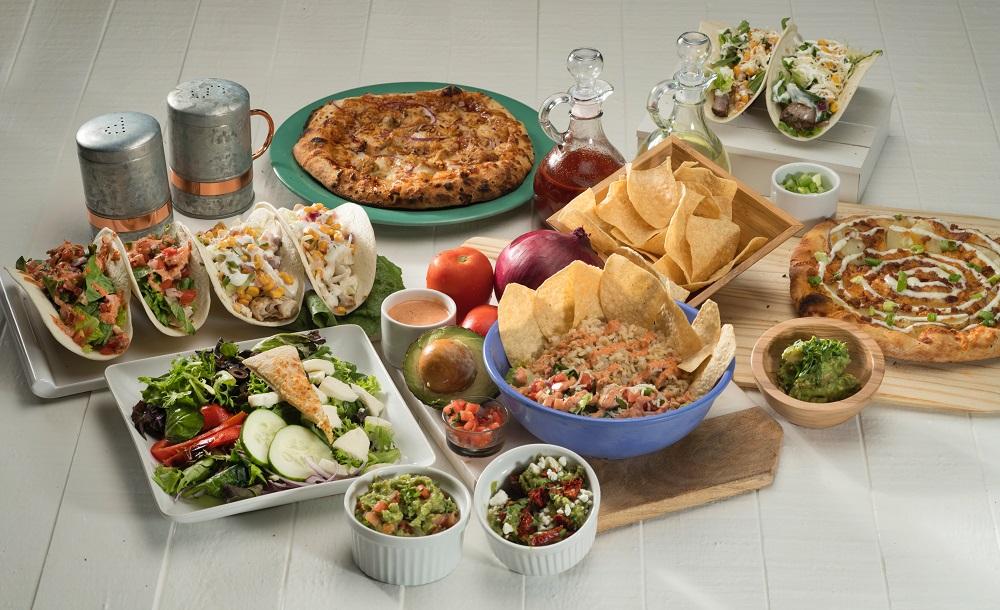Welcome to the captivating realm of food presentation, where culinary artistry meets visual delight. In the world of gastronomy, the art of presenting food is an enchanting dance that tickles the senses and stirs the soul. It transcends the mere act of nourishment and transforms a meal into a symphony of flavors, textures, and aesthetics. The importance of food presentation in the culinary tapestry cannot be overstated. The art of food presentation is a language that speaks volumes before the first bite, setting the stage for an extraordinary dining experience. In this article, we will embark on a journey through the art of food presentation, exploring its profound significance, unraveling the secrets of its mastery, and igniting your creative spirit to plate like a true virtuoso.
In the culinary world, the art of food presentation holds immense significance, transcending mere taste and flavor. It encompasses the creative arrangement and presentation of dishes, elevating the dining experience to new heights. In this comprehensive guide on food presentation techniques and skills, we will delve into the importance of food presentation, explore fundamental principles such as color, texture, and composition, provide practical tips and techniques for achieving professional-level plating, and inspire you with creative ideas to unleash your artistic prowess to master the food presentation art.

The Art of Food Presentation - A Beginner’s Guide to Essential Tips and Tricks
Understanding the fundamental principles of food presentation is crucial for mastering the art. Color, texture, and composition form the three main pillars of this craft. Colors should be vibrant, visually appealing, and harmoniously complementary on the plate. Incorporating diverse textures, such as crisp, creamy, or crunchy, adds depth and allure to the dish. Composition involves skillfully arranging the components, creating balance and visual harmony. By embracing these principles, you can transform your culinary creations into captivating works of art.
Imagine a vibrant salad, a medley of fresh greens, luscious cherry tomatoes, ripe avocado slices, and tangy feta cheese. The combination of various shades of green and red creates an appealing contrast, while the creamy avocado and crumbly cheese offer a delightful textural variation. Thoughtful arrangement of these elements on the plate transforms a simple salad into an enticing masterpiece.

Tips and Techniques for Plating Like a Pro
If you are planning to achieve professional-level plating, you must employ practical tips and techniques honed by experienced chefs. Here are some valuable insights that can help you enhance your plating skills:
1. Utilize high-quality tools: Investing in precision utensils like tweezers and offset spatulas aids in the precise placement and arrangement of food on the plate.
2. Create a focal point: Identify a key element in your dish and make it the centerpiece. This could be a beautifully seared piece of meat, an artful sauce drizzle, or a garnish that adds a burst of color.
3. Embrace height and depth: Introduce visual interest by incorporating various levels and layers on the plate. Stack ingredients, build vertical arrangements, or use garnishes to add height.
4. Treat the plate as a canvas: Envision the plate as your artistic canvas, employing negative space to accentuate the overall presentation. Allowing the food to breathe by leaving empty spaces between the components enhances visual appeal.
5. Maintain portion control: Strive for balance by avoiding overcrowding the plate. Ensure each element has ample space to shine.
6. Ensure cleanliness: Wiping the plate’s edges to remove smudges or drips is crucial in presenting a polished and appealing final dish.
7. Garnish with intention: Select garnishes that complement the dish’s flavors and colors. Fresh herbs, edible flowers, or delicate microgreens add elegance and finesse.
By incorporating these tips and techniques, you can elevate the visual appeal of your dishes, impressing both yourself and your guests.

Thinking Outside the Plate: Creative Food Presentation Techniques
While mastering the fundamentals is vital, embracing creativity and experimenting with unique food presentation styles are equally essential. Here are some ideas that can ignite your imagination:
1. Deconstructed dishes: Presenting individual components of a dish separately adds visual intrigue. Deconstruct a traditional lasagna, layering the pasta, sauce, and cheese in individual portions.
2. Geometric precision: Employ precise cuts to create geometric shapes, arranging them in symmetrical or abstract patterns. This technique infuses modernity and artistry into your plating.
3. Edible vessels: Surprise and delight by serving dishes in edible containers, such as hollowed-out vegetables or crispy Parmesan tuiles. This not only enhances visual appeal but also tantalizes the taste buds.
4. Artistic sauces and drizzles: Use squeeze bottles or fine brushes to create intricate patterns and designs with sauces and dressings. This technique adds an artistic flair to your plating.
5. Harmonious color palettes: Build a color palette for your dish by incorporating ingredients that share similar hues. A monochromatic approach results in visually stunning and cohesive presentations.
Remember, the possibilities for food presentation are endless. Let your imagination soar and embrace the joy of experimentation.

Frequently Asked Questions – The Art of Food Presentation
Why is food presentation important?
Food presentation holds paramount importance as it enhances the dining experience by stimulating our senses and creating anticipation for the flavors to come.
![]()
How can I improve my food presentation skills?
Enhancing food presentation skills requires understanding the fundamental principles, practicing plating techniques, and exploring different styles. References such as cookbooks, online tutorials, and culinary workshops offer valuable insights and inspiration.
![]()
Should I prioritize aesthetics or taste?
While visual appeal is essential in food presentation, taste should never be compromised. Striving for a harmonious balance between both aspects ensures an exceptional culinary experience.
![]()
How can I efficiently plate food for large gatherings?
Planning ahead and preparing components in advance are crucial for efficiently plating food at large gatherings. Employ assembly-line techniques, focus on simplicity, and incorporate creative elements.
![]()
Can I use everyday household items for plating?
Certainly! Everyday household items can be used creatively for plating. For instance, a cookie cutter can assist in creating precise shapes, and a spoon can enable elegant swoops and drizzles.
![]()
How do I select the right plate for my dish?
When choosing a plate, consider its size and shape in relation to the dish being served. The plate should complement the food without overshadowing it. White plates often provide a blank canvas for the dish’s colors and textures to shine.
![]()
Are there any current plating trends to be aware of?
Plating trends evolve over time. Current trends include minimalism, natural and rustic presentations, and the use of edible flowers and microgreens to enhance visual appeal.
![]()
How can I achieve balance in my plating?
Creating a sense of balance involves thoughtful distribution of colors, textures, and sizes of the dish’s components. Strive for a visually pleasing arrangement that avoids overwhelming any specific aspect.
![]()
What are common mistakes to avoid in food presentation?
Common mistakes include overcrowding the plate, using mismatched colors or textures, and neglecting cleanliness. Ensure all dish components are appropriately cooked and served at the correct temperature.
![]()
Can I use unconventional ingredients for garnishing?
Yes, you can employ unconventional ingredients for garnishing as long as they are safe for consumption and complement the dish’s flavors. Experiment with herbs, spices, and edible flowers to add a unique touch to your plating.
![]()

As we reach the culmination of this exploration into the art of food presentation, we invite you to embrace your inner artist and embark on a culinary adventure like no other. Armed with the knowledge of fundamental principles, practical techniques, and a myriad of creative ideas, you are now equipped to transform your kitchen into an artist’s studio. Let your imagination run wild, experiment fearlessly, and allow your culinary masterpieces to enthrall both your guests and yourself. Remember, food presentation is a boundless art form that knows no limits. So go forth, and may your plates become exquisite canvases that not only tantalize the taste buds but also awaken the senses, leaving an indelible impression on all who have the privilege of savoring your culinary creations. Embrace the art of food presentation, for it is a feast for both the eyes and the soul.
![]()

